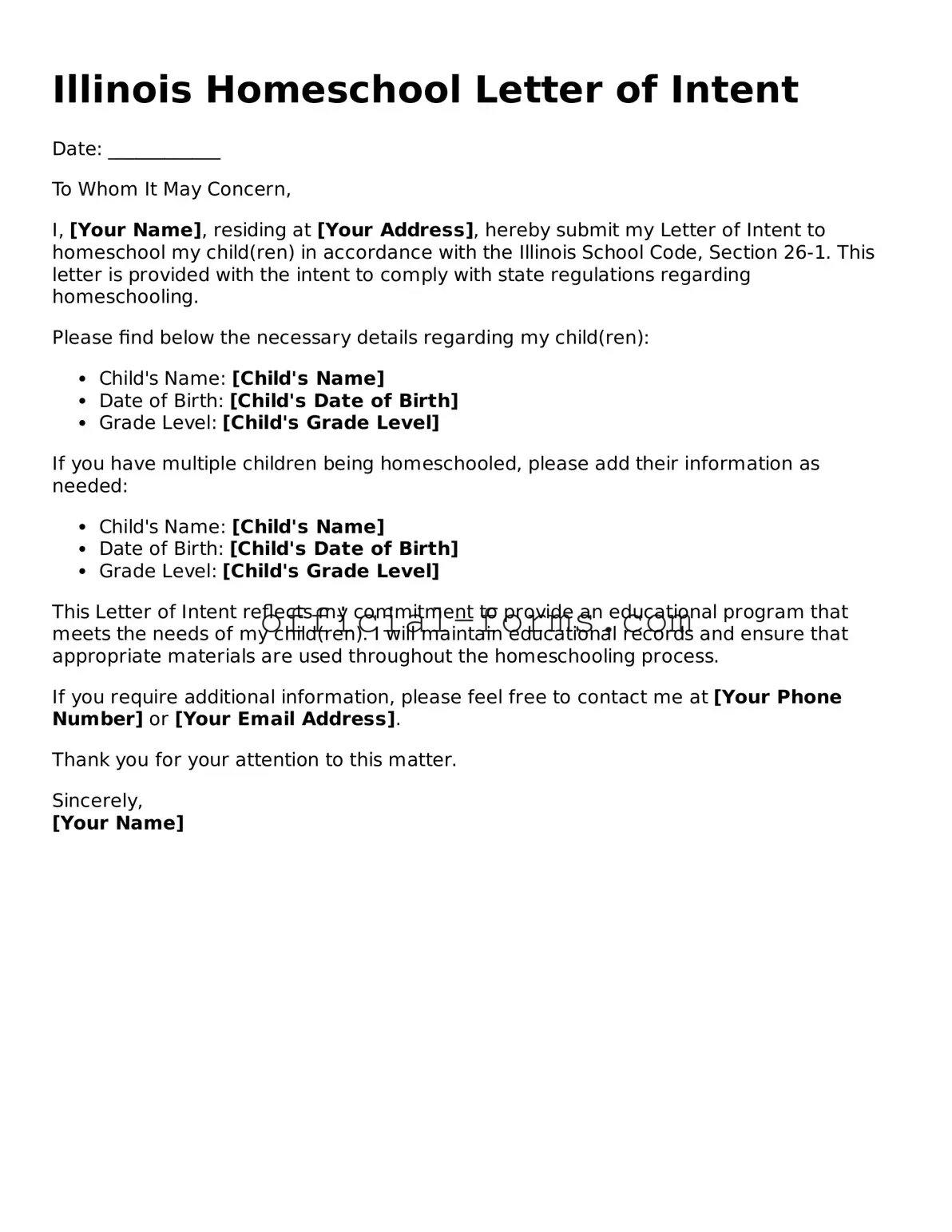Filling out the Illinois Homeschool Letter of Intent form can be straightforward, but many people make common mistakes that can lead to complications. One frequent error is failing to provide complete information. Each section of the form requires specific details about the student and the educational program. Omitting any part can result in delays or rejection of the submission.
Another mistake involves incorrect dates. The form asks for the start date of the homeschooling program, and entering an inaccurate date can create confusion regarding the educational timeline. It is essential to ensure that all dates are accurate and reflect the intended start of homeschooling.
Some individuals neglect to sign the form. A signature is not merely a formality; it serves as an affirmation of the intent to homeschool. Without a signature, the document is incomplete and cannot be processed. It’s vital to double-check that the form is signed before submission.
Providing outdated contact information is also a common oversight. The form requires current contact details to ensure that the school district can reach the family if necessary. Using an old phone number or email address can hinder communication and lead to missed updates or important notices.
Additionally, some people fail to keep a copy of the submitted form. Keeping a personal record is important for future reference. If any questions arise later, having a copy can help clarify the situation and provide proof of intent to homeschool.
Lastly, misunderstanding the requirements for educational plans can lead to mistakes. While the form does not require a detailed curriculum outline, some families mistakenly believe they need to include extensive information. Instead, a simple statement of intent is sufficient. Clarity on what is required can help streamline the process.
